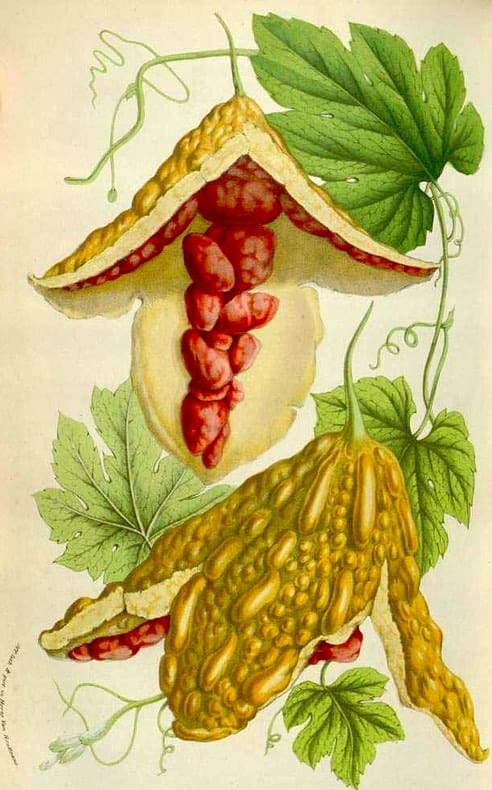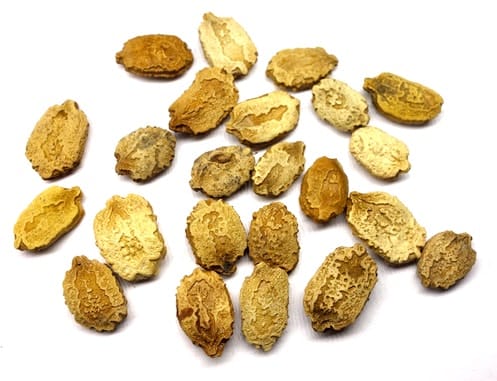Momordica, Bitter GourdBalsam Pear, Ballam PearKarella (Ayurveda) Karela (Unani) |

|
 Momordica charantia
Momordica charantia Houtte, Flore des serres et des jardin de l’Europe, 1855
 Bitter Gourd seed, used in Unani Medicine
Bitter Gourd seed, used in Unani Medicine(Calcutta Unani College)
Botanical name:
Momordica charantia
Parts used:
Fruit, immature fruit, seed
Temperature & Taste:
Cool (Warm in Unani and Ayurveda), dry. Bitter, Pungent
Uses:
1. Clears Phlegm and Damp:
-Edema, Fluid retention
-Arthritis, Rheumatism
-Cough, Bronchitis, Asthma
-purifies the Blood taken in Spring
-Melancholy, Burnt Bile
2. Beneficial in Diabetes:
-effective in the treatment of Diabetes (Fruit, Seed)
3. Kills Worms:
-auxiliary for Worms
4. Externally:
-a paste with vinegar is applied to skin eruptions, burns, boils, scabies, Eczema, Psoriasis
-powdered fruit is applied to Leprosy and Chronic Ulcers
-leaf juice is rubbed onto the soles for Burning Feet
Dose:
Typically eaten as a vegetable
Seed can be used as for the Fruit
Powder: 3–10 grams per day;
Fresh Juice: 10–20 mls (60mls per day for Diabetes)
Correctives:
1. Black Pepper
2. Ghee
3. Rice
Substitute:
Momordica balsamina, M. dioica (for medicinal use)

Main Combinations:
1. Diabetes:
i. Bitter Gourd with Gymnema
ii. Bitter Gourd with Gymnema, Fenugreek, Turmeric, Trikatu
2. Urinary stones, Bitter Gourd with Madder, Phyllanthus amarus, Tribulus
3. Gastric acidity, Bitter Gourd with Emblic Myrobalan
4. Skin diseases, Bitter Gourd with Madder, Picrorrhiza
5. Worms, Bitter Gourd with Neem, Garlic
Cautions:
1. Excessive use causes dryness. Not suitable to use medicinally in Yin deficiency.
2. Not used during pregnancy.
